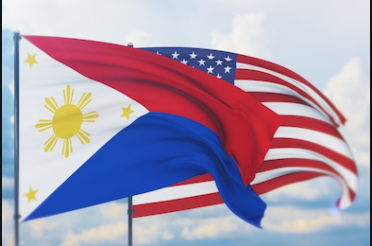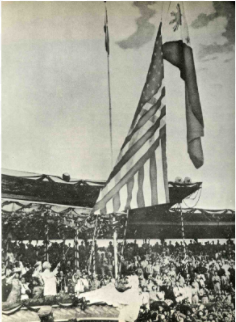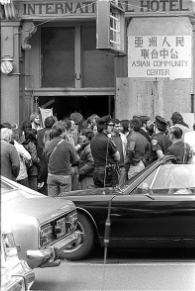Offering a short history of Filipino-American activism
More stories from Augustine Gallespen

The flag of the Philippines and the US flag flying together in unity.
In the United States, the month of October is recognized as Filipino American History Month. The month was first introduced by Dorothy Laigo Cordova in 1992 and was recognized by the U.S. Congress in 2009. This year’s theme is the history of Filipino American activism.
When the first wave of Filipino immigrants came to the United States, they were known as “manongs,” a term of endearment and respect that translates to “older brother.” Many came to pursue the American dream of a better life for not only themselves but their children as well. They worked as farmers, many being based in Delano, California. During the civil rights movement in the 1960’s, manongs started the Agricultural Workers Organizing Committee (AWOC) which, at the time, was mostly Filipino. AWOC was formed in order to regain the manongs’ dreams of dignity and a better life in response to the poor racial and economic environment. On Sep. 8, 1965, AWOC led a strike against farms throughout Delano, demanding minimum wage. Other workers, including the Mexican American National Farmworkers Association, joined the strike and later formed United Farm Workers (UFW). The strike lasted five years in total. It ended in 1970 when UFW agreed with numerous grape companies and improved the lives of more than 10,000 workers.

At this time, Asian Americans were also protesting the Vietnam War. In fear of America’s history of militarism against Asian countries, Asian Americans protested against the war. Filipinos, specifically, protested against the US reenacting the Philippines War of 1898 with Vietnam.
The height of Filipino activism took place in the late 1960s to mid-1970s during The Asian American Movement. Immigrants from all over Asia and American-born Asians united to fight against stigmas, stereotypes and xenophobia. From this movement, Asians living in America began identifying as “Asian American,” marking a sense of prominence, pride and acceptance in American society.
The Asian American Movement was inspired by other movements such as the Black Power movement, which was similar to the Civil Rights movement and the anti-Vietnam War movement. Many activists were students that created unions in their schools and communities, including the Philippine/Pilipino American Collegiate Endeavor (PACE). As a part of the Third World Liberation Front (TWLF), they and Black Student Union (BSU) aimed to expand access to college for people of color. Together, BSU and TWLF led the longest student-led strike from Nov. 6, 1968 to Mar. 22, 1969. They then created the first and only College of Ethnic Studies in the US.

In 1970, members from the Asian American Political Alliance formed the Asian Community Center (ACC) in San Francisco. ACC provided programs and healthcare for elders and children. The elderly Filipinos, some being the first-generation manongs, lived in a building named The International Hotel- also known as the I-Hotel- and were threatened with eviction. Since the I-Hotel was old and unsafe, development projects were made by the city to destroy the I-Hotel. When the elders refused to leave, the owners of the I-Hotel raised the rent so the elders couldn’t afford to live there. Asian American students, volunteers and the ACC rented and rebuilt the building and hosted anti-imperialism protests, postponing the evictions.
Filipinos also found purpose in advocating for political reform in the Philippines while in America. Many members of the Communist Party of the Philippines (CPP) had immigrated to America for political asylum after being politically repressed by then-president, Ferdinand Marcos. As the Kalayaan Collective, Filipino student activists and the CPP published a newspaper in 1971-1972. In 1973, they officially organized as the Katipunan ng mga Demokratikong (KDP) which translates to the Union of Democratic Filipinos. KDP advocated for revolution in the Philippines where President Ferdinand Marcos had instated dictatorship rule. KDP also advocated for socialism in the United States by building ethnic pride and participating in I-Hotel protests. In both countries, laws against interracial marriage were heavily protested and opposed as well.
In our current age, the media reports on racial and social reform as protests and movements continue. On their website, the Filipino American History Society reflects on Filipino American and current activism saying, “We honor the history of Filipino American solidarity with other communities in their fights for our equity and justice, including the Black Lives Matter Movement, American Indian Movement, Civil Rights and Voting Rights, Women’s Rights, LGBTQ Rights, and Environmental Justice.”
Your donation will support the student journalists of Neuqua Valley High School. Your contribution will allow us to print our next newspaper edition as well as help us purchase equipment and cover our annual website hosting costs.


AbbyMMS • Nov 3, 2020 at 10:00 pm
This is a really cool history piece. I definitely learned some things. Thank you